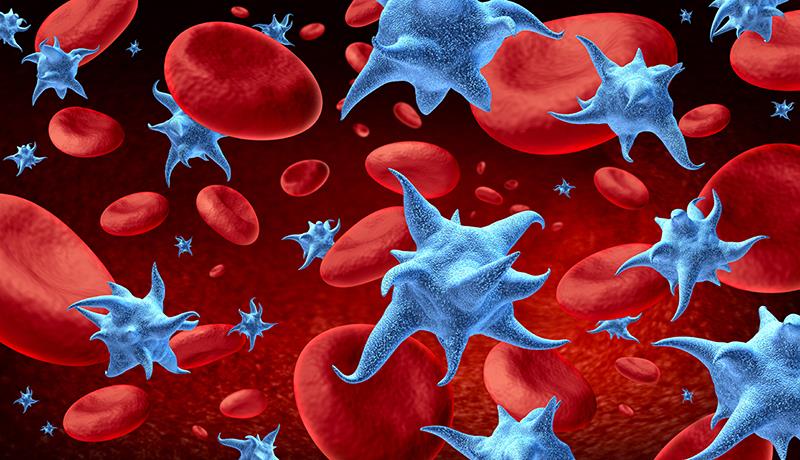Rilzabrutinib delivers beneficial effects in immune thrombocytopenia





A phase III trial (LUNA 3) has demonstrated robust therapeutic effects for rilzabrutinib in patients with previously untreated immune thrombocytopenia (ITP). Use of this BTK inhibitor results in rapid and durable platelet response, reduced bleeding and need for rescue therapy, improved physical fatigue and quality of life (QoL), and favourable safety and tolerability.
Lead author Dr David Juter from the Hematology Division, Massachusetts General Hospital, Harvard Medical School in Boston, US, enrolled both adult and paediatric patients with primary persistent or chronic ITP and platelet counts <30 x 109/L within 2 weeks of study initiation in LUNA 3. They then stratified participants by splenectomy status and thrombocytopenia severity.
A total of 202 patients met the eligibility criteria and were randomly assigned 2:1 to receive either oral rilzabrutinib 400 mg bid (n=133) or placebo (n=69) for up to 24 weeks, followed by rilzabrutinib only in the 28-week open-label period or long-term extension, if eligible. After the initial 12 weeks, nonresponders could join the open-label phase or discontinue treatment.
At baseline, ITP patients had similar overall age (median 47 years) and platelet count (median 15 x 109/L). Nearly half (46 percent) of the participants received ≥5 prior ITP therapies (including 28 percent splenectomized in both arms). The median ITP duration was longer in the rilzabrutinib arm than the placebo arm (8.1 vs 6.2 years). [ASH 2024, abstract 5]
Durable response
More patients on rilzabrutinib than on placebo achieved the primary endpoint of durable response (23 percent vs 0 percent; p<0.0001). For the combined double-blind and open-label periods, 38 of 133 (29 percent) patients in the rilzabrutinib arm achieved durable response.
The median time to first platelet count ≥50 x 109/L or ≥30‒<50 x 109/L and ≥doubled from baseline was 36 days (95 percent CI, 22‒44) for rilzabrutinib and was not achieved for placebo (hazard ratio, 3.1, 95 percent CI, 1.9‒49). Among rilzabrutinib-treated patients who achieved response, the median time to first platelet response was 15 days.
Compared with placebo, rilzabrutinib significantly reduced the need for rescue therapy by 52 percent (p=0.0007). It also induced clinically meaningful improvements in physical fatigue, with a mean change from baseline at week 13 of 7.95 vs ‒0.13 (p=0.01), and bleeding, with a mean change from baseline at week 25 of ‒0.04 vs 0.05 (p=0.0006).
During the double-blind phase, patients received rilzabrutinib for a median of 98 days and placebo for 84 days. The median compliance rate was ≥98 percent for both groups. All-cause, any-grade, and serious adverse events (AEs) were similar between treatment arms, as were grade ≥2 gastrointestinal AEs (6 percent vs 4 percent).
Diarrhoea (23 percent vs 4 percent) was the most common treatment-related AE, followed by nausea (17 percent vs 6 percent), headache (8 percent vs 1 percent), and abdominal pain (6 percent vs 1 percent). Other related AEs were ≤5 percent. One patient on rilzabrutinib had a grade 3 peripheral embolism, and another died due to pneumonia unrelated to treatment.
“Patients with primary ITP who are not sufficiently responsive or intolerant to available therapies experience higher rates of morbidity, mortality, and impaired QoL,” Juter said.